View current page
...more recent posts
Mark Danner on the bad decisionmaking that led to the Iraq quagmire. (Part One) (Part Two) Long but well written and worth a read, the essay will appear in the December 21, 2006 edition of the New York Review of Books. From Part Two:
Nearly four years into the Iraq war...the consequences of [the U.S.'s] early decisions define the bloody landscape. By dismissing and humiliating the soldiers and officers of the Iraqi army our leaders, in effect, did much to recruit the insurgency. By bringing far too few troops to secure Saddam's enormous arms depots they armed it. By bringing too few to keep order they presided over the looting and overwhelming violence and social disintegration that provided the insurgency such fertile soil. By blithely purging tens of thousands of the country's Baathist elite, whatever their deeds, and by establishing a muscle-bound and inept American occupation without an "Iraqi face," they created an increasing resentment among Iraqis that fostered the insurgency and encouraged people to shelter it. And by providing too few troops to secure Iraq's borders they helped supply its forces with an unending number of Sunni Islamic extremists from neighboring states. It was the foreign Islamists' strategy above all to promote their jihadist cause by provoking a sectarian civil war in Iraq; by failing to prevent their attacks and to protect the Shia who became their targets, the U.S. leaders have allowed them to succeed.I still think about the argument I had with someone in 2003, after I had marched in protest of the war: "I just have to believe that the government has expertise and access to information that we don't have and we have to trust that they know more than we do," I was told.
"I Hate The Others" [mp3 removed]
I posted this a few weeks back but I "pumped up the volume" so here it is again.
Update: and again, with better equalization.
Good essay by Bob Somerby about the over-analysis of Borat by the punditocracy. Or mis-analysis. He chops down several supposed examples of the film's condescension to its subjects, suggesting that the critics don't have any better understanding of the film's various awkward situations than Borat does. "[New York Times columnist] David [Brooks], a stranger in a strange land...fails to see that the film concerns Borat himself—and that Borat is in many ways us." I certainly felt at sea in the scene where Borat gets drunk with three real life fraternity brothers: I understood them on one level having grown up in the South, but in their racism and general all-round incoherency they were as strange and scary to me as bug-eyed extraterrestrials.
Somerby notes the humorlessness of many critics of the film. In one scene, Borat tries to check into a Dallas hotel after learning the vernacular and dress code of some local black kids, and is promptly evicted by security. The scene gets its yuks from the cultural disconnect and Borat's low-riding suit pants, but the earnest commenters on blogger Kevin Drum's board are tut-tutting that it makes too much fun of the desk clerk. The footage was all a set-up--the clerk thought he was going to be giving a tour of the hotel (the Adolphus), and had no idea who the erratic "walk-in guest" was. In an email reproduced by a Drum commenter, the clerk writes: "I also called a friend at the Dallas Film Commission and she told me that she was certain that this had some connection to a man who had been spotted driving around Dallas in an ice-cream truck with a bear in the back of it." But he can't see the comedy in that sentence, says Somerby--he can't laugh at himself.
Lux Provocateur TM soap commercial [.mp4 movie]. Not American TV-safe, according to cartoon brew. Girl discovers bar of soap in woods, turns into Steve Madden model. Illustrates the theories of Camille Paglia "in the field," as it were. Note aroused forest animals, and leather dude at end. (via schwarz)
Happy Thanksgiving to all, by the way.
Digital Pog Criticism (aka "pog bloggin'")
Some thoughts on Michael Bell-Smith's digital pog collection. Briefly, pogs started as illustrated milk bottle caps in Hawaii and grew into a kid-collectibles crazelet in the '90s. Digital pogs are 177-pixels-in-diameter GIF files that exist and can be "bartered" mainly via the Internet and web browsers. Whether Bell-Smith's pogs catch on and actually become viable mock-nostalgic anti-commodities remains to be seen.
As Bill Schwarz said when a few of these were first posted: the pog "is the low man on the collectible ladder. Lower than beer cans, lower than glass insulators, lower than advertising drink glasses, lower than everything. Congrats to mbs on recognizing a commodity that faint."
Whatever happens with them in the Internet's gift-exchange economy, these pogs are interesting to think of as a different kind of icon model. If you look at avatars dredged up by something like the LiveJournal icon-scraper they're all rectangular. Talk about "conventional"!
As an artist, working with the circular format makes you think about different content issues--what kind of subject matter lends itself best to this form? (Cameos for portraits, views through viewfinders and portholes, puns on circular imagery, etc.)
Down side: they require more steps to make than rectangles. Also, not every viewing situation respects the GIF's command to "transparencize" the area outside the circle--if that doesn't happen, the effect is blown.
Update: the above comments address the collectible aspect of pogs. Of course in the physical world their main purpose, and means of exchange, is a game where the pogs are stacked and knocked over, with the pogs landing face up going to the winner. Some serious thought needs to be given to how digital pogs can acquire the edge of competition, gambling, and class disruption that led to their banishment in schools across America in '94-'95.
Dear Tom, We are continuing to monitor your site for signs of Buzz. You often seem close to achieving a "buzz breakthrough," but you have a number of self-defeating elements built into your program. You don't stick to one topic, you are frequently harsh in your opinions, the mix you are attempting of art world insider theorizing and political rants seems ill-conceived, your own art is inconsistent, your music occupies an uncomfortable ground between club tunes and art music, satisfying neither constituency, and your alternating tone of outraged moral seriousness and adolescent silliness is frankly just a turnoff. We'd like to help you along with your BQ (buzz quotient) but, frankly, we don't know what the f*k you're doing and we don't care.
Update: last year's "memo from the suits"


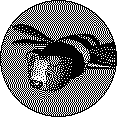
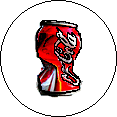

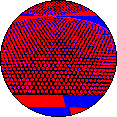

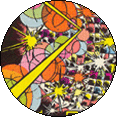

Digital Pogs from the collection of Michael Bell-Smith. T to b, l to r: Matt Smear, Michael Bell-Smith, Jeff Sisson, John Michael Boling, Paper Rad, Matt Smear, Michael Bell-Smith, Sarafina Engfer (2). The ones below are all by me, except the blond "parade lady" which is my pog of a Thorrific photo.
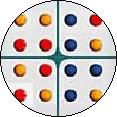

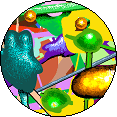

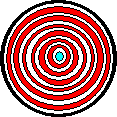

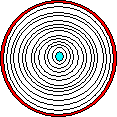

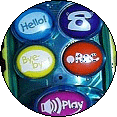
More YouTube Sequencer Demos
Fairlight CMI Sequencer (vintage digital interface on early sampler! I like the sound, graphics, and keyboard clicks in this Japanese subtitled video)
Korg Radias-R Demo ("state of the art" digital signal processing is kind of cheesy but placidly filmed and fun to watch)
Roland System 100-M (demo in Japanese of pattern-creation on modular analog synth)
